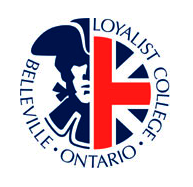First Nations documentary highlights water issues
By Chloë Ellingson
Last year Suzanne Brant ended up in the hospital for nine weeks because of what she described as poor water quality at her home on Tyendinaga Mohawk Territory.
“I started having problems with my nervous system,” says Brant, “and the next thing I knew, I couldn’t eat or drink.”
Brant says it took her body six months to get relatively back to normal, and she says she still can’t eat a lot of the things she used to.
Brant’s experience reflects a reality on many reserves across the country. This issue will be explored during Canada Water Week, which falls from March 19-25, at Loyalist’s Aboriginal Studies department, where Brant works as a student success mentor.
On March 22, the department will be screening the documentary Crisis on Tap: First Nations Water For Life, on a loop from 9a.m. to 3p.m. in room 3H8.
“The film is very current,” says Brant, who wants to make known the far-reaching effects of poor-quality water. “People don’t realize how difficult it can be when you don’t have potable water,” she says. “If you don’t have a good quality of water, then your health becomes an issue, environment becomes an issue, social aspects become an issue, economics become an issue. All of those things lead off of one thing.”
Produced by the Centre for Aboriginal Health Research at the University of Victoria, Crisis on Tap takes a look at the spiritual value of water in First Nations communities, the causes of bad water on reserves, and the value of water in our ecosystem at large. According to the film, there are currently over 1000 water advisories across Canada, and about one in five reserves fall into this statistic.
One source interviewed in Crisis on Tap is Tsartlip First Nation Honoured Elder Tom Sampson.
“They talk about water as a commodity, as something that people must have control of and own,” Sampson says in the documentary. “For us, we don’t own it, we don’t control it. We look after it.”
 Print This Post
Print This Post






